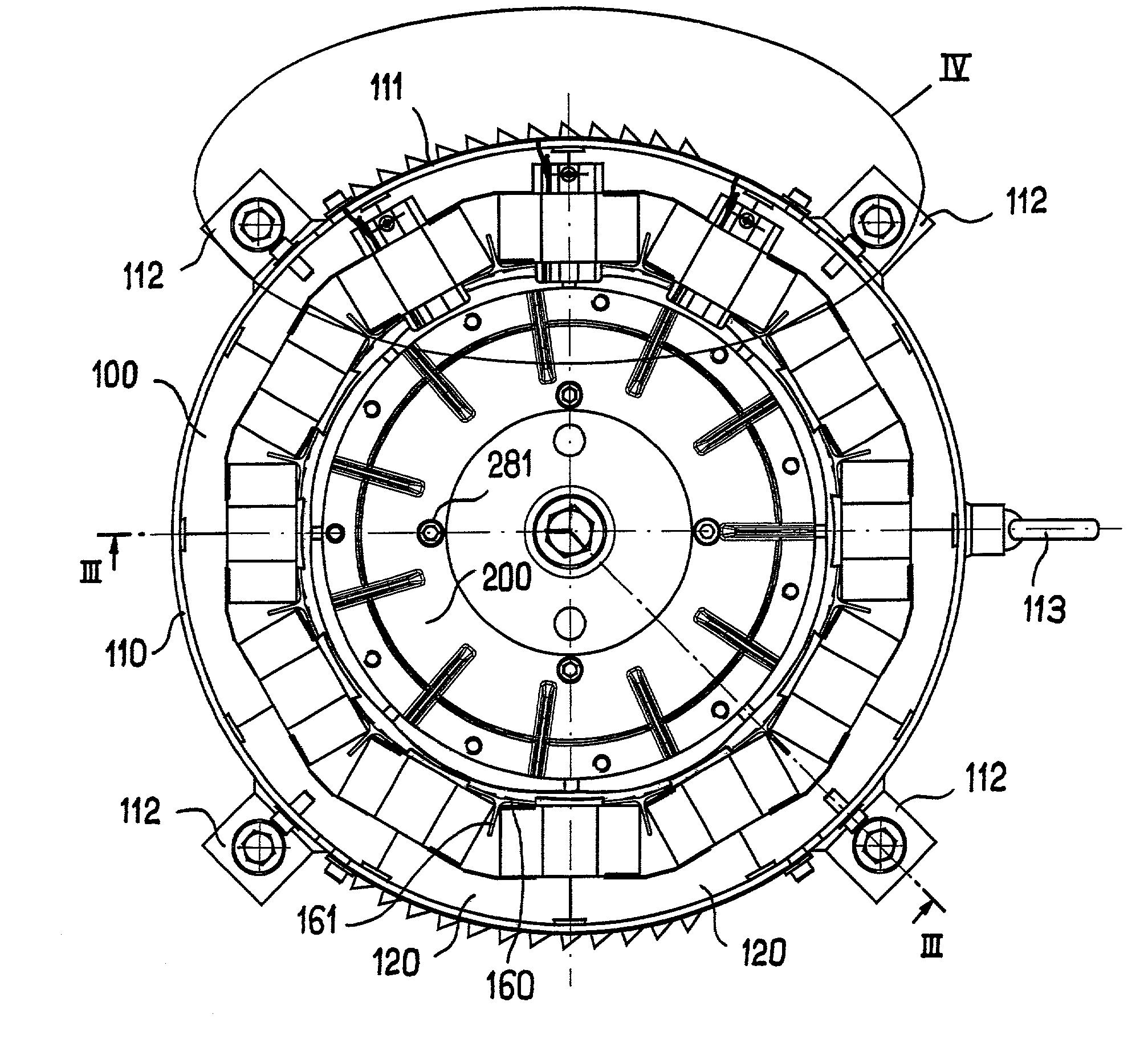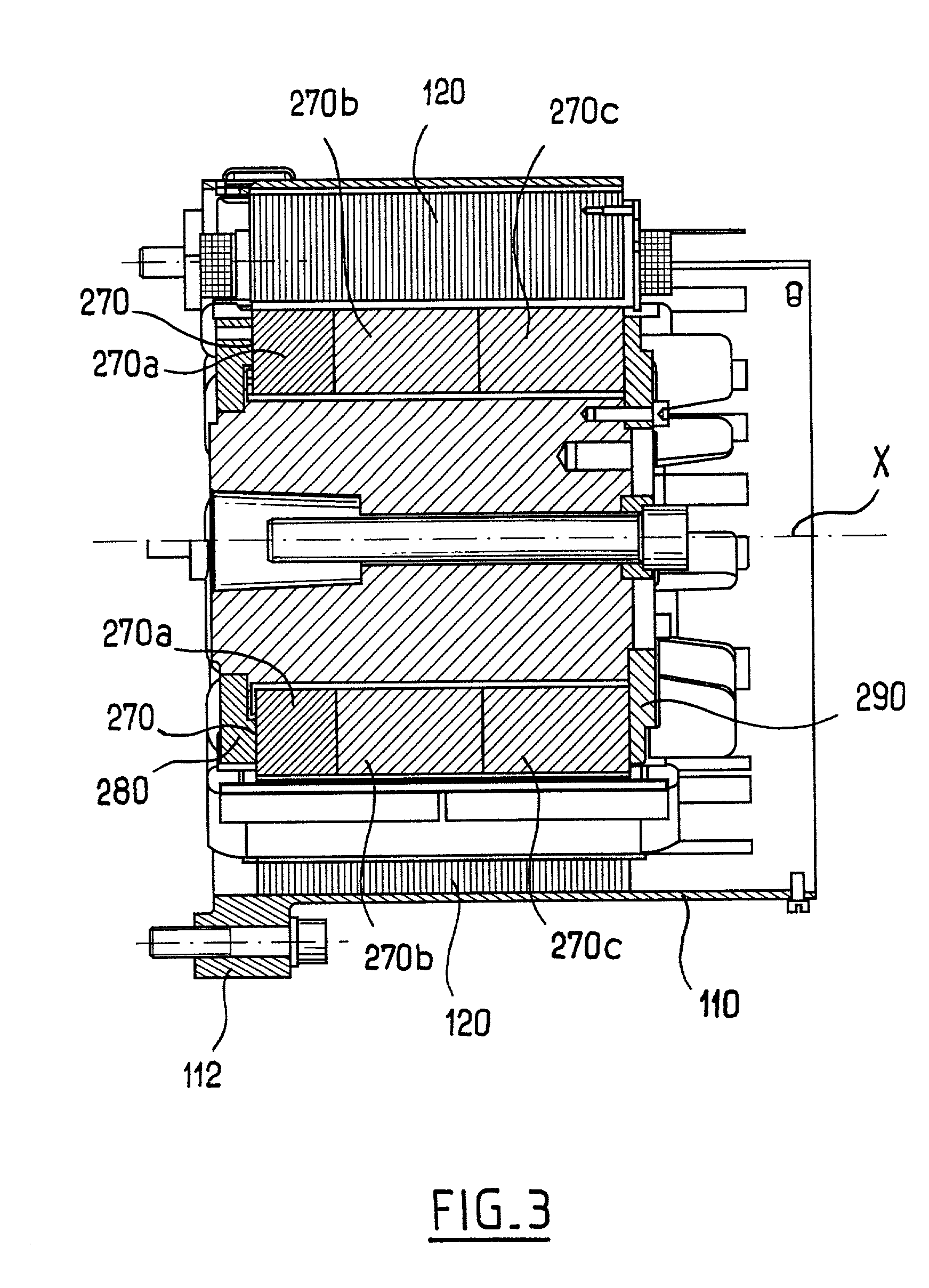Rotary electric machine having a flux-concentrating rotor and a stator with windings on teeth
a technology of stator and rotor, which is applied in the direction of rotating parts of magnetic circuits, and shape/form/construction of magnetic circuits, etc., can solve the problems of rotors being detached, machine is not designed to rotate at high speed of rotation, and the manufacturing cost is low, so as to achieve the effect of high power
- Summary
- Abstract
- Description
- Claims
- Application Information
AI Technical Summary
Benefits of technology
Problems solved by technology
Method used
Image
Examples
Embodiment Construction
[0057] FIGS. 1 to 4 show a synchronous motor 10 of the invention comprising a stator 100 and a rotor 200. The motor 10 is brushless, it has a flux-concentrating rotor, and its stator has windings on teeth, and it operates on three-phase AC.
[0058] The stator 100 has a steel case 110 with a lateral opening 111 in particular for passing electrical conductors for powering the stator windings. On the outside, the case is provided with fixing tabs 112 and with a hook 113 for hoisting purposes.
[0059] In the example shown, the stator 100 has a magnetic circuit that comprises a plurality of identical sectors 120, one of which is shown in isolation, in perspective in FIG. 6.
[0060] Each sector 120 is constituted by a stack of identical magnetic laminations that are superposed and clipped together so as to constitute a unitary assembly, with clipping being obtained using a conventional technique whereby each lamination is subjected to spot deformation at a plurality of assembly points 121. Usin...
PUM
 Login to View More
Login to View More Abstract
Description
Claims
Application Information
 Login to View More
Login to View More - R&D
- Intellectual Property
- Life Sciences
- Materials
- Tech Scout
- Unparalleled Data Quality
- Higher Quality Content
- 60% Fewer Hallucinations
Browse by: Latest US Patents, China's latest patents, Technical Efficacy Thesaurus, Application Domain, Technology Topic, Popular Technical Reports.
© 2025 PatSnap. All rights reserved.Legal|Privacy policy|Modern Slavery Act Transparency Statement|Sitemap|About US| Contact US: help@patsnap.com



